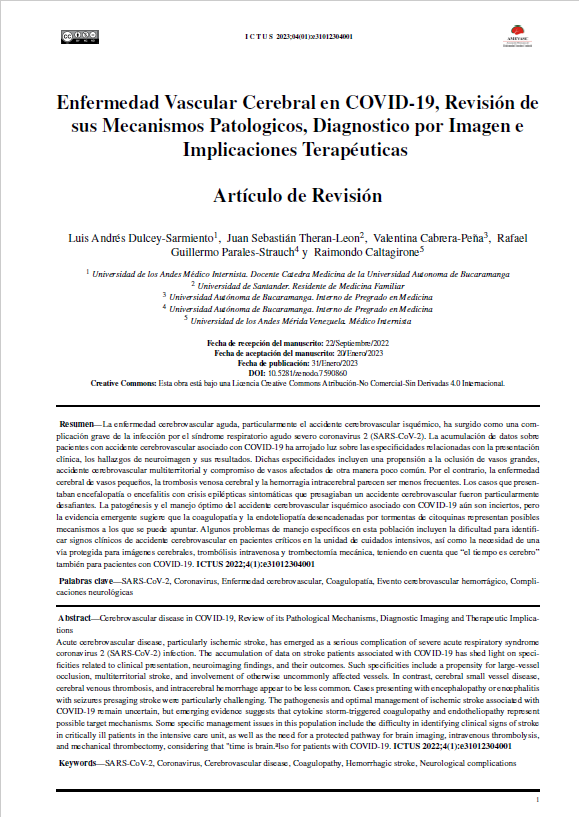Abstract
Acute cerebrovascular disease, particularly ischemic stroke, has emerged as a serious complication of severe acute respiratory syndrome coronavirus 2 (SARS-CoV-2) infection. The accumulation of data on stroke patients associated with COVID-19 has shed light on specificities related to clinical presentation, neuroimaging findings, and their outcomes. Such specificities include a propensity for large-vessel occlusion, multiterritorial stroke, and involvement of otherwise uncommonly affected vessels. In contrast, cerebral small vessel disease, cerebral venous thrombosis, and intracerebral hemorrhage appear to be less common. Cases presenting with encephalopathy or encephalitis with seizures presaging stroke were particularly challenging. The pathogenesis and optimal management of ischemic stroke associated with COVID-19 remain uncertain, but emerging evidence suggests that cytokine storm-triggered coagulopathy and endotheliopathy represent possible target mechanisms. Some specific management issues in this population include the difficulty in identifying clinical signs of stroke in critically ill patients in the intensive care unit, as well as the need for a protected pathway for brain imaging, intravenous thrombolysis, and mechanical thrombectomy, considering that "time is brain" also for patients with COVID-19.

This work is licensed under a Creative Commons Attribution 4.0 International License.
Copyright (c) 2023 Ictus

